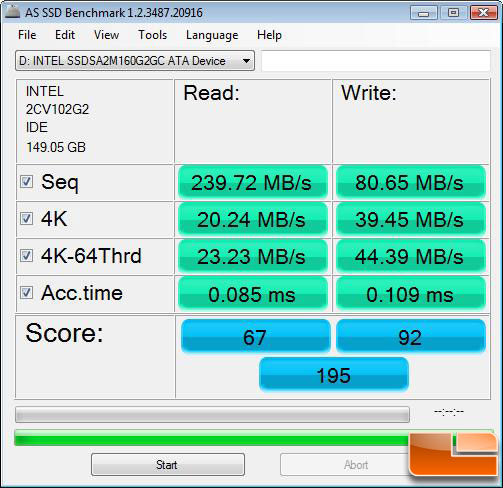To the performance issue, the SSD can handle the RAW speed internally to and from the flash chips. Externally it can saturate the SATA interface if the compression is higher than {interface speed}/{raw speed}, wich is about 1,4x compression for reads, and 2-2,25x for writes. Meaning anything compressed by 1,4x or more will saturate the interface when read, and anything compressable by 2,25x or more will saturate the interface when writing. F.ex. Windows 7 and the MS office 2007 suite is compressable by more than 2x.
When it comes to price of an internally 2R0 (2x RAID-0) SF-1200 drive, could make it as a 3,5" drive, with 2x 2,5" PCBs + one PCB for the ROC with 1x SATA/SAS 6Gbps connection externally and 2x SATA 3Gbps internal connectors to the 2,5" PCBs. So you pay for 2x 50GB SF-1200 + $100 for the 2port ROC only able to handle RAID-0 (not using cache) and the extra PCB it's on. I'll take your word for the OWC 50GB SF-1500 based drive costing ~230$. SF-1200 placed on a PCB whitout the supercap slot could also reduce the cost, but probably not by $50, let's say $25 to $200 pr SF-1200 on the 2,5" PCB whitout the 2,5" enclosure and cables and other stuff.
2x $200 + $100 = ca $500 for 100GB. $500/$380 (agility 2 100GB) = 1,3.
380*1,5 = $570.
*drifting off in idealistic dreams*
It would be nice if SandForce decided to make a PCIe SSD with the same sort of design for prosumers, but then take full use of the NAND for the RAW speed and not limit it to 200-220/120-130 on the larger capacities. By bumping the power in the controller to simelar levles of higher end RAID cards for the higher capacities, you could get several GB/s from a 200GB card for compressible data. Postulating linear scaling of raw performance from the 50GB, raw performance could be 800MB/s read (if 200 raw read is indeed limited by the physical max read of the NAND for the 50GB..),and 500MB/s write, and then be multiplied by compression when possible up to saturation of the PCIe interface. By not artificially write-limiting small block random, IOPS scaling could also be linear from the SATA drives using sandforce's architecture, making it capable of 4KB random write equal to the raw write rate of 500MB/s = 125K IOPS.
SandForce's architecture is actually more suitable for SSD RAID than SSD controllers.
It could also be nice if SandForce made a RAID controller dedicated for flash SSDs (or NAND Flash DIMMs?) taking compression one level higher and sequential steaming of random writes to the HBA. In that case with a powerfull processor you could be bandwidth limited by the PCIe interface for well compressible/compressed data, whitout the SSDs ever knowing the difference, working at their own pace with only (or mainly) sequential writes and both sequential and random reads.
sigh
so many floating thoughts, so little hope of it becoming reality.





 Reply With Quote
Reply With Quote .
.  .
.
 .
. )
) .
.
 .
.






Bookmarks